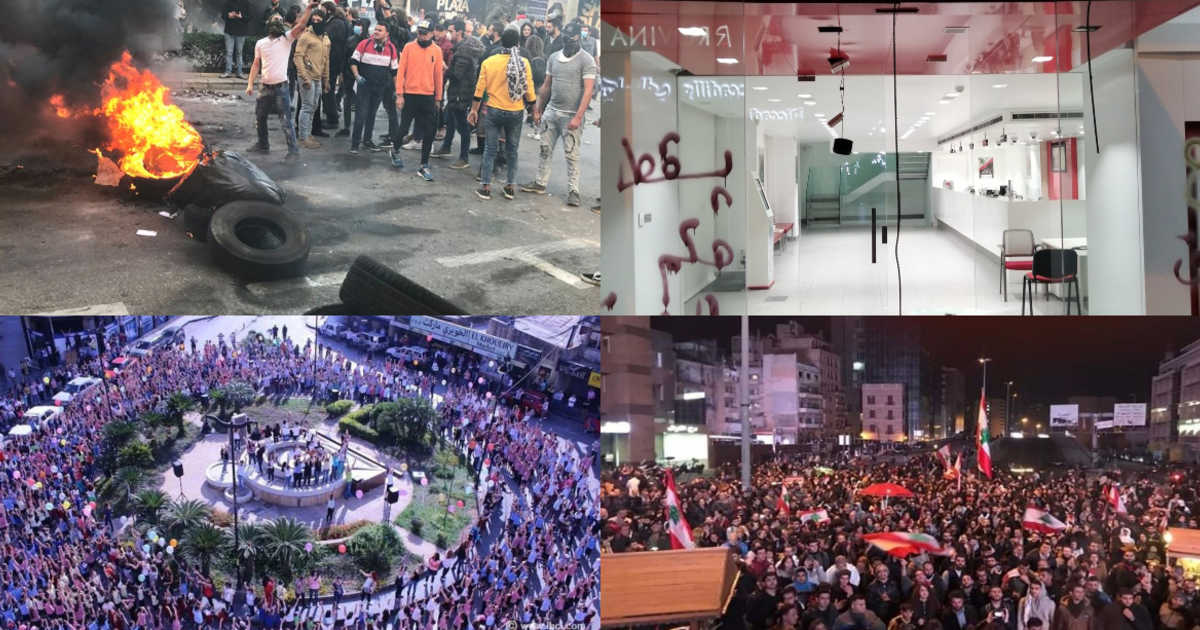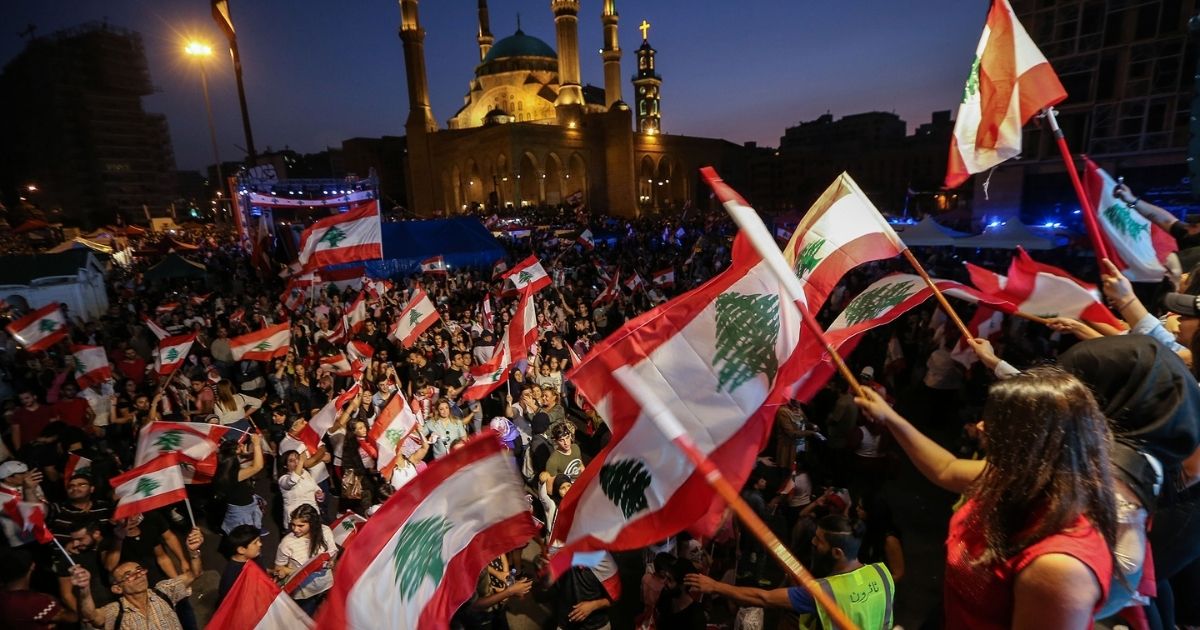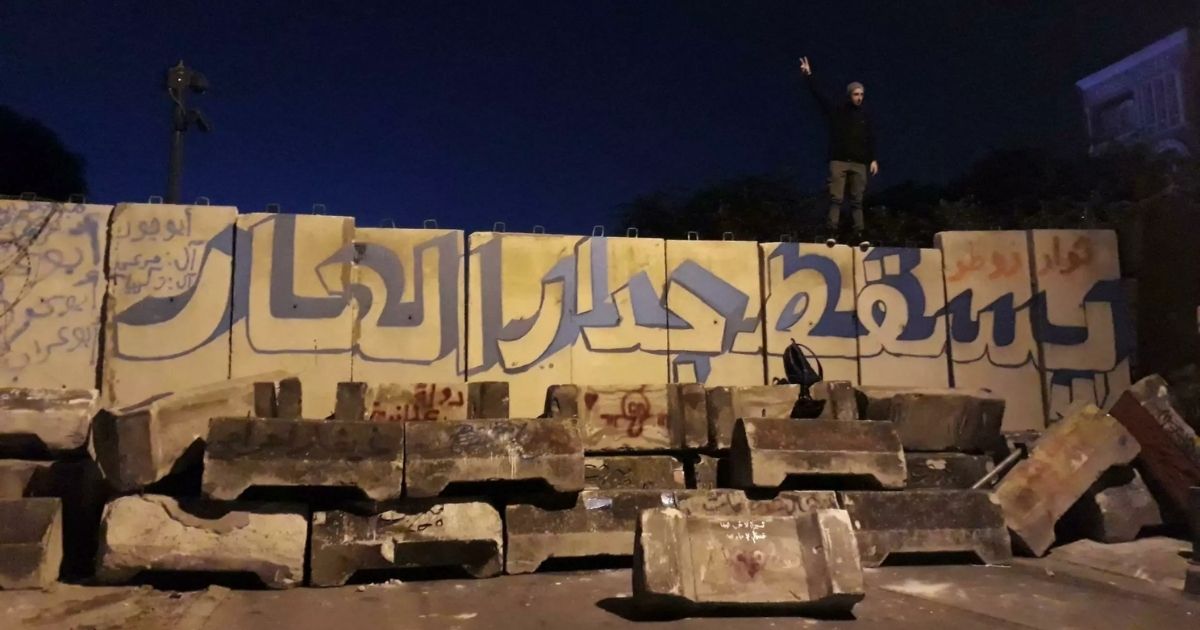90 days have passed since the beginning of the Lebanese 17 October Revolution, and of a whole different era in Lebanon’s history.
People have revolted against decades of corruption and warlords who are still feeding their bellies from the pockets of the Lebanese lower-class.
Ever since the revolution was born from an alleged tax on WhatsApp, the crises in Lebanon only got bigger and more serious as time passed, with little to no solution or rescue plan.
In the past two weeks, Lebanon suffered from immense electricity and water outages, which -we can assure you- were not suffered by politicians’ villas and palaces.
The dollar value also increased significantly; the dollar just reached on Tuesday, January 14, LBP 2470.
Banks still refuse to pay their depositors, the unemployment rate is increasing to a maximum, half-salaries are now becoming fixed-salary-rates, and a rescue government has yet to see the light because of sectarian and political conflicts.
Lebanon is literally crumbling apart, and the Lebanese people are seeking the streets of Lebanon for refuge.
“Anger Week“, as protesters call it, has shown in its very first day the rebirth of the revolution with all its strength and stubbornness, and in most regions of Lebanon.
“The revolution did not stop for once,” a protester confirmed, “we only gave our politician a chance to make it right. We are just reminding them that slacking is not even an option, we need a reformation of Lebanon.”
Almost all main roads and highways in Lebanon, and in Beirut, were blocked today by protesters with burning tires and garbage.
Blocked roads also resulted in numerous clashes between protesters and people stuck in traffic, and between protesters and security forces.
Jounieh Highway, Al-Bahsas-Tripoli, Madina Al-Riyadiyah, and Ring Bridge, all witnessed clashes with security forces amid attempts to reopen roads, which were blocked either by sit-ins and/or burning tires.
However, the Central Bank in Hamra witnessed the most trouble. In order to break physical assaults from both sides, riot police threw tear gas at protesters, which resulted in many wounded from both parties, as well as few detained.
The clash lasted more than two hours before security forces decided to disperse the crowd.
The conflict was caused after a group of protesters were able to break through the walls separating them from the Central Bank.
After the crowd dispersed, protesters strolled the streets of Hamra and a group broke glasses of the banks in the area, unleashing their anger against the oppressive policies of the banks.
The people of the revolution are cautioning against insurgents with messages circulating on social media.
As for roads, car accidents were recorded in Kahaleh Highway, Casino road, Riyaq, and Kesserwan with people wounded but no dead.
Despite the controversy around closing roads, people have turned into blocking roads as a way to paralyze an-already-paralyzed country; economically, financially, and politically.
Zouk also witnessed harsh arguments between protesters who were blocking the streets as a way to pressure the government, and between people in their cars trying to reach their jobs and errands.
A car tried to pass through the closed road in Zouk, which resulted in a clash between the car driver and protesters.
Protesters marched their way from Ring to Central Bank in Hamra, and from there to prime minister Hassan Diab’s house in Tallet Khayat.
PM Hassan Diab has been assigned the duty of forming a government but has failed to do so (as of this moment) due to internal and alleged external political pressures.
The protesting people outside PM Diab’s house gave the prime minister a 48 hours deadline to form an independent government, or else they threatened to seek other methods of disruption as a way of pressure in their own way.
LBCI reporter confirmed that the number of people on the Ring Bridge is significantly bigger than the number of people during the first days of the 17 October Revolution.

















